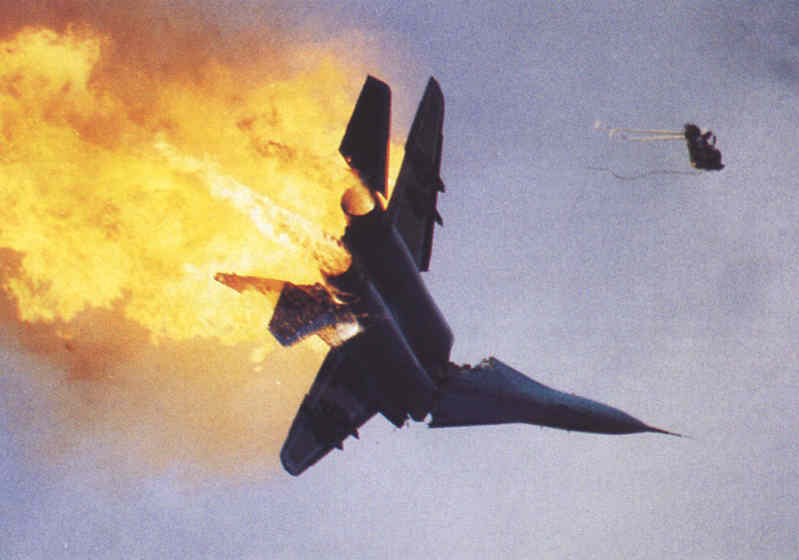IDENTIFICATION FRIEND OR FOE
Missile firing off the USS Gates CG-51
Believe this ship is used in the TV Show "JAG"
Sam,
There were 2 or 3 times I remember that we had Migs come out to test PROVIDENCE. They would stay at what they thought missile range was and circle around. Several times we would designate FC radar to try to lock on to them but as soon as they saw the C band transmitters they would dive for the deck and we would lose them both on search radar and FC radar. It's probably a good thing they didn't know that at the time. Providence's very own FTCS J.F. (Charlie) Brown is the only person I personally know who actually downed a Mig with a Terrier Missile. He was on the USS STERRETT when it happened. I kept in touch with him and served on USS TEXAS with him. He passed away in '79 or '80.
In regard to IFF Mike notes:
The pilots and air controllers call the IFF transponders a 'Parrot' and showing IFF is referred to as 'squawking'. When a pilots IFF was down he would report that his 'Parrot was sick'IFF was used in Vietnam but the function of keeping track of the air picturewas the job of a ship assigned as PIRAZ and part of it was Radar Advisory Zone. I remember it was usually one of the 11 Class CG's or the CGN-9 that had that assignment and they stayed up in the northern part of the gulf.
Every ship in the gulf usually knew the minute there was a Mig in the airand the REAL AAW folks would get hopping and it wasn't long before the Mig was down one way or the other.
We definitely had air superiority and all of our planes used to check in and out with PIRAZ and they would look over the returning raids real closely to make sure they weren't "dirty" ie have an enemy following along with them.
Primarily, the IFF is used by FRIENDLIES to make sure they don't draw "FRIENDLY" fire. IFF can't possibly help you engage unfriendly aircraft at maximum range because they won't be squawking anything at all and the first time you know they are in the vicinity is when you get a "skin paint" on them.
Mike Matteson
The AN/SPS-29 is a rectangular "bedspring" looking antenna located on the Main Mast. I can barely make it out in the photo. The AN/SPS-10 is below it on a little platform on the forward side of the Main Mast. I can't make it out in the photo. The antenna that is on the mast just aft of the after stack looks like it is an AN/SPS-37. It may have been installed after I left the ship. The AN/SPS-8B was a round antenna with a large feedhorn assembly on the port side of it. The AN/SPS-42 stands out clearly on the after mast as the almost square, black antenna just forward of and above director 5.
Mike Matteson
Terrier Missiles on Launcher with AN/SPQ-5A Fire Control Radar in the background.
IFF - IDENTIFICATION FRIEND OR FOE
It was an octal code that painted out on radar to ID a specific plane. You could tell exactly which squadron, and in some cases which plane it was by the "squawk" code.
Every plane had the squawk box on it, including passenger planes. There was a switch that the pilot could set if he was in trouble. Occasionally they would hit this switch and not know it, particularly when getting out of the plane on the flight deck of the carriers. That created some interesting activity. Every ship on Yankee Station knew it and until the flight crew found the plane and turned off the switch, every ship called the carrier to "remind" them of the problem.
THE SQUAWK BOX
The the squawk box was just another item added to a plane, like a flight recorder, that emitted a signal. I assume it was stashed in some out-of-the-way place in the plane. The switch was exactly that; if the pilot had an indication of problems and had time to flip the switch, It would immediately show up on a radar scope as a very bright spot, easily seen.
Jack Reighley

An
example of what can happen to you if you don't identify yourself........